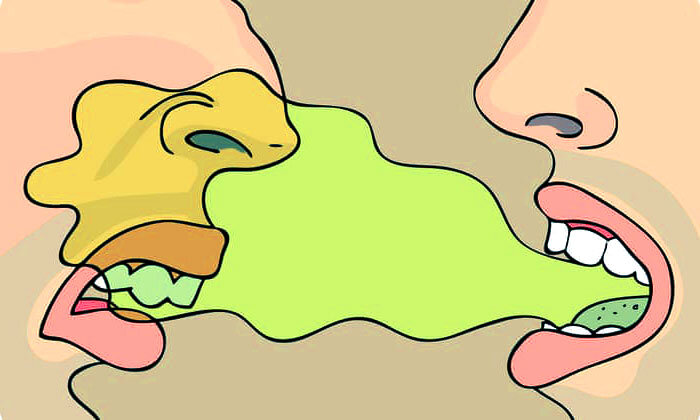What are the Benefits of Using Mouthwash?
Reasons why you should include this rinsing agent to your oral hygiene regimen
Mouthwash – it’s a part of oral hygiene that most of us are aware of, and aren’t using properly. In this blog, we’re discussing this rinsing tool, how it works, how to use it, and why you should be using it in your daily dental routine.
Is it Necessary for a Healthy Smile?
The short answer to this question is no, although, it certainly helps! Although the Romans began using versions of mouthwash in ancient times, it wasn’t until the 18th century that oral bacteria was officially discovered and progress towards removing it with rinsing agents was refined.
In 1865, English doctor Joseph Lister revolutionized surgery with the use of sterilization with antiseptic. Inspired by the concept, two brave men used a combination of both sterilization and antiseptic practices to establish the Johnson & Johnson company. After just 10 years, in 1875, the first mouthwash on the market was released: Listerine.
Nowadays, Listerine has many competitors alongside of its bottles promising to freshen your breath and eliminate bacteria that causes decay and other serious oral conditions. If mouthwashes are really a tool to help improve our oral health, how do you know which one is right for your smile?
The Right Type for You
A lot has changed since mouthwash’s humble beginnings. Entire aisles are now dedicated to the countless different kinds of mouthwashes, and all of these options can prove overwhelming to the untrained eye.
In general, there are four categories mouthwashes can fall into: Antibacterial, Fluoride Rinse, Prescription Strength, and Tooth Whitening. Let’s learn a little more about each one.
Antibacterial
Plaque – Inhibiting
Fights bad breath and plaque by killing bad bacteria and reducing the chance of developing gingivitis and cavities
This is the most popular kind of mouthwash used today
Fluoride Rinse
Preventative
Fights gum disease and decay with added fluoride
Designed to help those lacking fluoride intake
Prescription Strength
Antiseptic
Best for those with gingivitis and gum disease
Can be found over the counter, however, your doctor may prescribe one through you pharmacy
Tooth Whitening
Cosmetic
Used for creating a whiter, brighter smile.
Does freshen breath but doesn’t kill bad bacteria or reduce plaque that can cause odor.
Possible side effects of tooth-whitening mouthwash include gum irritation and tooth sensitivity
So, the next time you’re searching the shelves for a mouthwash, remember that brand-names vary endlessly, but mouthwash does not!
Mouthwash DO’s and DON’Ts
As easy as the instructions may seem, there are certain things about mouthwash and the way it works that you should know. Here’s our handy list of Do’s and Don’ts when it comes to using mouthwash.
DO
Choose an alcohol-free option. Not only is it more gentle, but it helps you avoid dry mouth!
Use mouthwash during the day. Instead of using it only during your morning/evening brush routines, mouthwash is a great tool to use after eating. It neutralizes the PH in your mouth and resists damage that comes from acids.
Seek help if you notice new mouth ulcers or stains on teeth.
DON’T
Do not Rinse with water after using mouthwash! This washes away helpful ingredients before they can do their job.
Avoid overuse. Rinsing with mouthwash 1x daily is best.
Don’t use mouthwash instead of brushing and flossing! Mouthwash is meant to be an addition, not a substitution.
How to Use Mouthwash: The RIGHT Way
Depending on the brand of mouthwash you choose, it’s important to read the provided instructions on the label. However, most mouthwashes follow similar steps.
Measure - Pour the recommended amount into a small cup. Exact measurements vary, but a safe bet is around 15mL
Rinse - Swish around your mouth, making sure liquid makes direct contact with all areas of your teeth.
Gargle - The ideal number here is between 30 – 60 seconds. Gargling helps mouthwash reach back to fight bacteria on your tongue.
Spit - After you’ve spit, do not rinse your mouth with water! The optimal time for mouthwash to remain on your teeth undisturbed is 30 minutes.
These simple four steps should be used daily; one of the best times right after you eat! Rinsing with mouthwash after a meal helps get rid of food debris, preventing bacteria from building in your mouth. If you’d rather use mouthwash during your regular hygienic activities, use before you begin brushing. Again, doing this helps remove food debris and prepares your smile for a thorough cleaning. Using mouthwash first also ensures that you won’t rinse away any fluoride remaining after your brushing.
Remember, mouthwash is a great addition to your dental health, not a substitution. The best way to prevent cavities and maintain healthy gums and teeth is by brushing, flossing, and meeting with your dentist regularly.
Here are some other articles you may enjoy reading.
How Do I Get Bad Breath to Go Away?
Combat ‘halitosis,’ otherwise known as ‘bad breath,’ with these helpful tips!
Finding the Right Toothbrush for You
When was the last time you changed your toothbrush? Find out everything you need to know about replacing your toothbrush and finding the perfect one for your teeth.
What’s the Deal with Fluoride?
Fluoride is anything but a dangerous chemical, in fact, it’s an incredibly helpful mineral for our teeth! We’re giving an exclusive tell-all about fluoride and the many benefits it has on our smiles.









